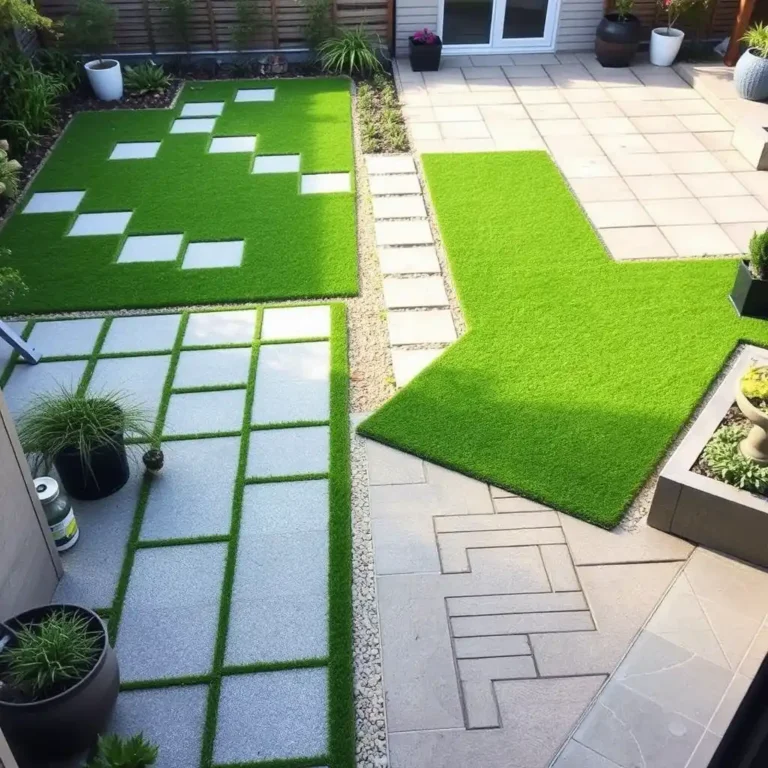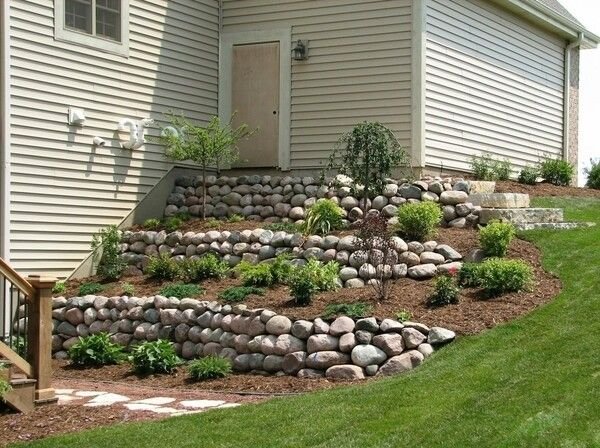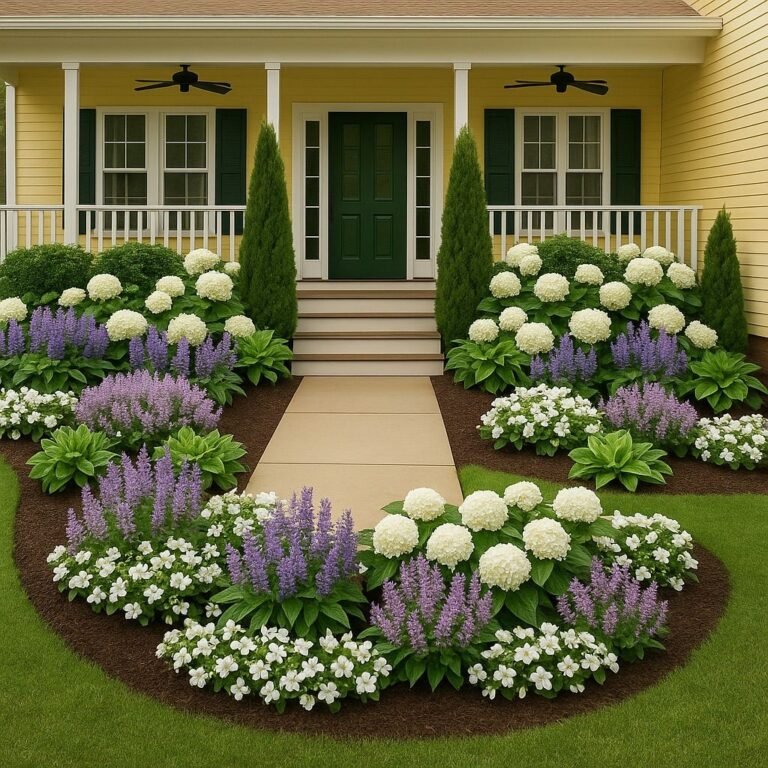Some Awsome Cottage Garden Design Ideas That Create Romantic Outdoor Spaces

Modern gardens feel too controlled. The manicured lawns, spaced shrubs, and mulched beds look sterile rather than welcoming. They lack the soul and abundance that makes gardens feel like living spaces rather than landscaping projects.
Cottage garden design offers the antidote through romantic abundance, self-seeding flowers, and relaxed informality. These gardens embrace nature’s exuberance while gently guiding it into spaces that feel both wild and intentional simultaneously.
We’re covering 10 cottage garden design ideas that create the overflow beauty and casual charm defining this beloved style. These approaches work for various climates and property sizes bringing timeless English garden romance to any location.
Essential Principles of Cottage Garden Design
- Abundant Plantings Replace Minimalism: Cottage gardens favor packed beds with plants touching and intermingling rather than isolated specimens in mulch. It’s like nature filling every gap where abundance becomes the aesthetic. The density creates lush fullness impossible with sparse contemporary plantings.
- Informal Mixing Replaces Formal Order: Vegetables grow beside flowers, herbs intermingle with roses, and self-seeded volunteers stay where they land. It’s like potluck dinners where variety creates charm. The relaxed combinations feel collected rather than designed.
- Vertical Layers Add Dimensional Beauty: Ground covers flow into perennials rising to shrubs backed by climbing roses creating height variation. It’s like painting in three dimensions where depth comes from layered plantings. The vertical interest prevents flat, boring garden beds.
- Romantic Accessories Enhance Natural Beauty: Arbors, gates, birdbaths, and rustic benches add charming focal points among abundant plantings. It’s like jewelry where carefully chosen pieces complement natural beauty. The accessories provide structure and rest for eyes.
10 Cottage Garden Design Ideas
Create romantic abundance with these cottage garden design ideas that embrace nature’s exuberance while maintaining intentional beauty.
Mixed Flower and Vegetable Beds
Combine edibles and ornamentals in the same beds creating productive beauty. Plant tomatoes beside zinnias, lettuce edging rose beds, and herbs throughout borders. It’s like eliminating boundaries where food and flowers coexist naturally.
Choose vegetables with ornamental value—purple cabbage, Swiss chard, flowering kale. The mixed approach maximizes space while creating visual interest. This cottage garden design strategy embraces traditional cottage practice where every inch produces beauty or food.
Self-Seeding Annuals Throughout
Encourage plants like foxgloves, hollyhocks, and forget-me-nots seeding freely creating spontaneous combinations. The volunteers fill gaps and naturalize throughout gardens. It’s like letting nature plant where she chooses.
Allow some flowers going to seed rather than deadheading everything. The casual attitude creates authentic cottage charm impossible with rigid control. This cottage garden design element adds unpredictable beauty changing yearly through natural reseeding.
Climbing Roses on Every Structure
Cover arbors, fences, walls, and sheds with climbing roses creating vertical floral displays. The abundant blooms and fragrance define cottage garden romance. It’s like wallpapering with roses where every surface becomes canvas.
Choose disease-resistant varieties—New Dawn, William Baffin, Zephirine Drouhin—requiring less maintenance. Prune after flowering maintaining shapes and encouraging blooms. This cottage garden design essential creates signature romantic moments throughout the property.
Narrow Winding Paths
Create meandering paths using brick, stone, or gravel inviting exploration. The informal routes encourage slow strolling discovering garden surprises. It’s like garden storytelling where paths reveal rather than expose everything immediately.
Edge paths letting plants spilling over softening hard edges. The narrow widths force intimate engagement with plantings. This cottage garden design element creates journey rather than destination where walking becomes experience.
English Perennial Borders
Design deep borders packed with perennials providing succession blooms from spring through fall. Layer plants by height with tallest at back creating depth. It’s like botanical theater where performers take stage throughout seasons.
Include classics—delphiniums, peonies, catmint, roses, salvias—in repeating groups creating rhythm. The abundant plantings eliminate visible soil. This cottage garden design approach creates the quintessential English garden border defining the style.
Rustic Wood Arbor Entry
Install arched wooden arbor marking garden entrance creating threshold moment. The structure supports climbing plants while framing views beyond. It’s like doorways into magical spaces where passages feel significant.
Build using cedar or treated lumber proportionate to garden scale. Train roses, clematis, or honeysuckle creating living archway. This cottage garden design element provides essential structure and romantic focal point.
Informal Lawn Shapes
Replace geometric lawns with organic shapes flowing naturally through gardens. The curved edges feel softer and more naturalistic. It’s like water flowing where curves feel more organic than rigid rectangles.
Mow paths through meadow areas rather than maintaining entire lawns. The reduced mowing saves time while increasing ecological value. This cottage garden design strategy balances manicured and wild creating relaxed beauty.
Traditional Picket Fence Boundary
Install classic white picket fencing defining garden boundaries with cottage charm. The iconic fences provide backdrop for plantings while establishing property lines. It’s like picture frames where traditional boundaries enhance rather than hide contents.
Choose 3 to 4-foot heights allowing views over while providing gentle separation. Paint white maintaining regularly or allow natural wood weathering. This cottage garden design classic instantly signals cottage garden intent.
Bird Bath or Fountain Focal Point
Position stone or ceramic bird bath as central feature attracting wildlife and creating visual anchor. The water element adds life and sound to gardens. It’s like inviting nature to participate where birds become living ornaments.
Surround with low plants ensuring birds spot approaching predators. Keep water fresh changing weekly during warm months. This cottage garden design element serves ecological function while providing charming focal point.
Herbs Intermixed Throughout Plantings
Scatter culinary and ornamental herbs throughout beds rather than isolating in dedicated herb gardens. The fragrant foliage adds sensory dimension while providing utility. It’s like seasoning garden beds where herbs enhance everything around them.
Include lavender, rosemary, thyme, sage, and catmint in flower borders. The silver and purple foliage provides textural contrast. This cottage garden design approach embraces traditional cottage practice where herbs grew wherever space existed.
Creating Authentic Cottage Garden Charm
- Start Small and Expand Gradually: Begin with manageable bed sizes learning plant combinations and maintenance rhythms before expanding. It’s like testing recipes before hosting dinner parties where experience prevents overwhelming failures. The phased approach allows organic garden development.
- Prioritize Fragrance in Plant Selection: Choose roses, herbs, sweet peas, and other scented varieties enhancing sensory experience. It’s like aromatherapy landscaping where fragrance matters as much as appearance. The perfumed air distinguishes cottage gardens from scentless contemporary landscapes.
- Allow Happy Accidents and Volunteers: Let self-seeded plants staying where they land creating spontaneous combinations. It’s like improvisation where unplanned moments often prove most beautiful. The relaxed attitude creates authentic cottage garden character.
- Embrace Imperfection and Natural Growth: Accept plants sprawling, flopping, and intermingling rather than staking and controlling everything rigidly. It’s like preferring tousled hair over shellacked perfection. The natural growth patterns create the casual beauty defining cottage style.
Frequently Asked Questions About Cottage Garden Design
How Much Maintenance Do Cottage Gardens Need?
Cottage gardens require moderate maintenance—weekly attention during growing season including deadheading, watering, and light weeding. The dense plantings suppress weeds naturally once established. Avoid perfectionistic standards reducing stress and workload significantly.
The style forgives imperfection better than formal gardens. Self-seeding plants and naturalistic growth reduce intervention needs. Focus on spring and fall major tasks with lighter summer maintenance.
Can You Create Cottage Gardens in Small Yards?
Absolutely—cottage style scales beautifully to tiny spaces through vertical gardening and dense plantings. Small yards actually suit cottage aesthetics where abundance feels appropriate rather than overwhelming. Focus on climbing plants maximizing vertical space.
Choose compact varieties of traditional cottage plants. The intimate scale creates cozy charm larger properties can’t achieve. Even balconies and patios accommodate cottage container gardens successfully.
What Plants Are Essential for Cottage Look?
Roses, lavender, foxgloves, hollyhocks, delphiniums, and peonies form cottage garden foundations. Add self-seeding annuals like nigella and cosmos. Include herbs—especially lavender and catmint—throughout plantings.
Choose old-fashioned varieties over modern hybrids when possible. The traditional plants carry authentic cottage garden character. Regional climate dictates specific species but principles remain constant across locations.
Do Cottage Gardens Work in Modern Settings?
Yes—cottage gardens soften contemporary architecture beautifully through contrasting organic abundance against clean lines. The romantic plantings humanize modern buildings adding warmth and character. Balance contemporary structure with traditional cottage plantings.
Modern interpretations use cottage principles—abundance, mixed plantings, vertical layers—with updated plant palettes. The style adapts while maintaining essential character defining cottage gardens universally.
How Long Until Gardens Look Established?
Cottage gardens show character within one growing season as annuals fill spaces and perennials establish. Full abundance requiring 2-3 years develops as plants mature and self-seeding creates natural combinations. Strategic starter plants accelerate visual maturity.
The developing process adds charm as gardens evolve naturally. Each season brings changes showing progress toward the layered abundance characterizing mature cottage gardens. Patience rewards with authentic beauty impossible to instant install.
Growing Your Cottage Garden Dream
Cottage garden design proves that romantic beauty comes from embracing abundance, mixing freely, and relaxing rigid control. These gardens reward gardeners willing to partner with nature rather than dominating it completely. The style creates living spaces that evolve and improve naturally over time.
Start by choosing a small area testing cottage principles before expanding. Select traditional plants suited to your climate and allow natural reseeding. The journey toward cottage garden beauty provides as much joy as the destination itself.
What cottage garden element would you start with? Share your romantic garden plans below!






